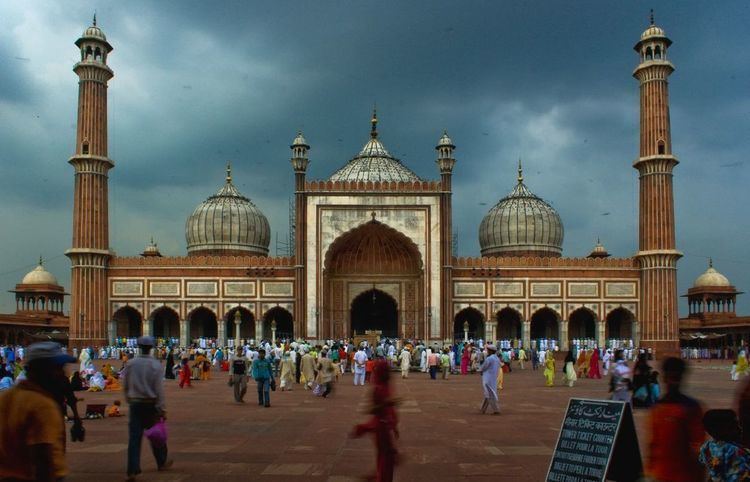 | ||
Indo-Islamic architecture encompasses a wide range of styles from various backgrounds that helped shape the architecture of the Indian subcontinent from the advent of Islam in the Indian subcontinent around the 7th century. It has left influences on modern Indian, Pakistani and Bangladeshi architecture. Both secular and religious buildings are influenced by Indo-Islamic architecture which exhibit Indian, Islamic, Persian, Central Asian, Arabic and Ottoman Turkish influences, many of which themselves were influenced by Indian architecture through the spread of Indian culture before the advent of Islam.
Contents
Indo-Islamic architecture into three broad classes, consisting of monuments built by the Delhi Sultans, the Mughals and the regional emperors.
Architecture of the Delhi Sultanate
The Delhi Sultanate is the name given to an Islamic Kingdom based mostly in North India around Delhi, ruled by five successive dynasties. The monuments built by these Sultans were the first examples of Indo-Islamic Architecture. The most important of these are in the Qutb Complex.
Qutb Complex
The Qutb Complex is an array of monuments located at Delhi. The Qutb Minar, the tallest brick minaret in the world, is the most influential of these structures. The minar was built by Qutbuddin Aibak to celebrate Turkish victory and to mark the beginning of Muslim rule in India. The Quwwat-ul-Islam Mosque and the Alai Darwaza are some other monuments located in the complex.
Mughal Architecture
The Mughal Empire, an Islamic empire that lasted in India from 1526 to 1764 left a mark on Indian architecture that was a mix of Islamic, Persian, Turkish, Arabic, Central Asian and native Indian architecture. A major aspect of Mughal architecture is the symmetrical nature of buildings and courtyards. Akbar, who ruled in the 16th century, made major contributions to Mughal architecture. He systematically designed forts and towns in similar symmetrical styles that blended Indian styles with outside influences. The gate of a fort Akbar designed at Agra exhibits the Assyrian gryphon, Indian elephants, and birds. The major examples of Mughal Architecture are:
Taj Mahal
The most well known example of Mughal architecture is the Taj Mahal. It was built for the wife of Shah Jahan, who died in 1631. The main ideas and themes of garden tombs had already been explored by earlier Mughal emperors, and this was the culmination of all those previous works into a national landmark. The 171 meter white tomb rises above a reflecting pool and a fine garden. Four minarets on the corners frame the tomb which has a giant white dome in the center.
Red Fort
The Red Fort is also a brilliant example of Mughal Architecture. It was built during the zenith of the Mughal Empire under Shah Jahan. It was designated a UNESCO World Heritage site in 2007. As one of the largest forts in India, it served as the official residence of the emperor for nearly 200 years.
